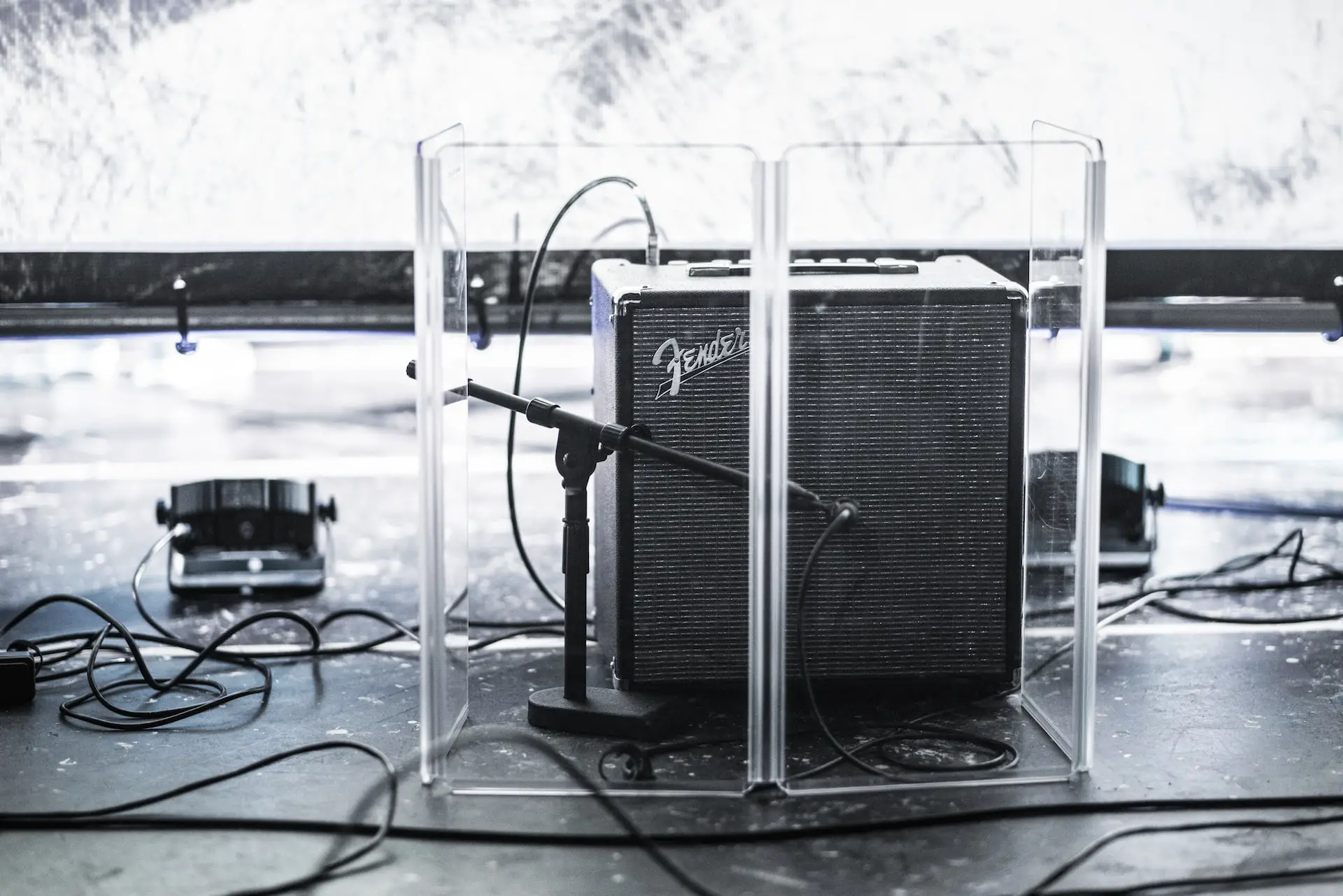Covering a guitar amplifier is crucial to protect it from accumulating too much internal and external dust. In addition to potentially damaging the internal electrical components of the amplifier, too much dust in the amp will also negatively impact the tone and sound of your playing.
Your guitar amplifier is very fragile internally – regardless of how loud and powerful it may sound when you are playing. Covering the amplifier will add one extra layer of protection from dust and general environmental elements.
As someone who has played guitar and bass for over seven years, I can confirm that too much dust over a long period can negatively impact your amplifier.
I have avoided covering my amplifiers when I should have, which resulted in me having to replace them sooner than I would have liked.
However, there is good news. A simple amplifier cover will help increase the life of your investment, which will help it sound better over a more extended period. This will ultimately save you money as well.
This article will cover the importance of protecting your guitar amplifier in more detail. We will also go over the potential damage a build-up of dust can do to your guitar amplifier and recommend a good amplifier cover. We will also be going over general tips for taking care of the amplifier.
We will also go over some frequently asked questions like how to clean dust out of a guitar amplifier properly, how to best store a guitar amplifier, and whether an amplifier can be stored upside down.
Please keep in mind as you read this article that the advice is for the long-term maintenance and protection of your guitar amplifier. Keeping it covered will help ensure you get the longest possible life out of your amplifier and help ensure it sounds as great as possible.
Should You Cover Guitar Amp?
You should definitely cover your guitar amp. Here are the benefits:
1. Protection of investment
Guitar amplifiers are not cheap. Therefore, your amplifier should be covered to protect it when it is not used.
This is especially crucial if you should need to store it long term (more on this reason below). Covering the amplifier will also help when moving or transporting it against potential falls.
While large and powerful, your guitar amplifier is sensitive and fragile internally. When it is not in use, dust and other things will settle in the jacks, and other components could hurt it and negatively affect the tone over time.
Your guitar amplifier will also function best when it is at room temperature. If you are storing it somewhere slightly lower than room temperature, cover it to ensure it stays at a reasonable room temperature if possible.
2. It Looks prettier
The amplifier looks better overall when it is covered to protect it from dust and fading of the color over a long time.
This will also prevent you from having to clean the dust off the surface and internally (we will cover directions to remove dust from outside and inside the amplifier in more detail in this article as well).
3. General clumsiness
It is human nature to bump into things and scratch them accidentally. Protecting the speaker cone is crucial as well. A cover over the amplifier will help to protect it from general scratches and scrapes and such.
Also Read: Does Guitar Amp Matter: Will Upgrading Make Any Difference?
Can Dust Damage an Amplifier?
An accumulation of dust over time can damage the overall sound of the amplifier. As with any electrical equipment, the accumulated dust layer can clog up any ventilation in the amplifier, thus making it more difficult for the natural air to get in and cool it down.
Dust can also accumulate on the circuit board of any internal electrical components and will impact the overall sound of your guitar playing.
Tube amps can potentially overheat, and solid-state amps can result in power loss with too much dust accumulated.
Also Read: 4 Common Things That Ruin Guitar Pickups (Ft. Magnets, Dust)
Recommended Amp Cover
Every brand that manufactures an amplifier will make an amp cover that you can use for that particular amplifier.
This is a good option if you are attempting to stay loyal and consistent with one specific brand. You will also benefit from knowing that it will be made to the dimensions of what you are looking for.
Another good option is to go with tuki Amplifier covers. They are highly recommended and heavily padded to ensure maximum protection for the amplifier.
Tips To Take Care of Guitar Amp
As you read through these tips, please keep in mind that these tips apply to the long-term care and maintenance of your guitar amplifier.
Please do not become too concerned if these tips are not followed perfectly to the letter once in a while. Do your best not to avoid failing to follow these tips regularly, and you will find that your investment will last much longer.
1. Avoid extreme temperatures
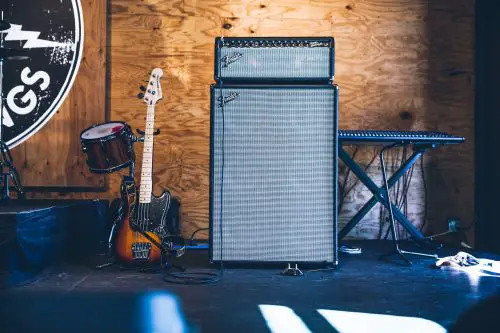
Avoid putting guitar amp in extreme temperatures
The amplifier will work best and perform its best at room temperature. In other words, do not keep the amplifier anywhere you would not want to sleep or live in. If long-term storage is necessary, consider a long-term storage unit that is climate controlled.
2. Keep your amp dry
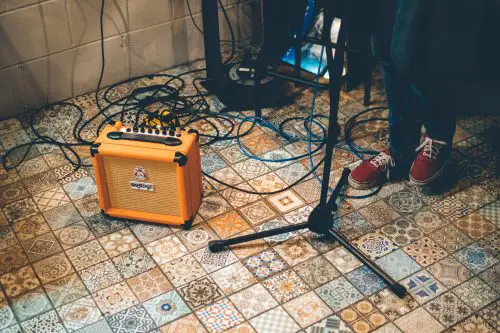
Don’t keep your amp in too much moisture
Storing an amplifier long-term will require that it is covered to avoid any moisture build-up. The moisture will seep into the cabinet and the electrical components of the amplifier, which will almost certainly damage it long term.
3. Transport it securely
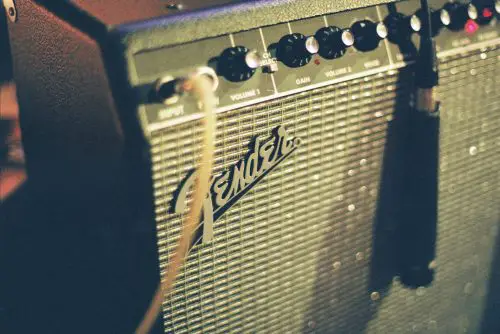
Amp has very sensitive components, carry it carefully
While the amplifier is large and heavy, it contains a lot of sensitive electrical equipment. The speaker cones are also rather sensitive. The more the amplifier bounces around, bumps into things, etc., the more likely you may damage some of the internal components.
4. Keep your volume low when turning it on
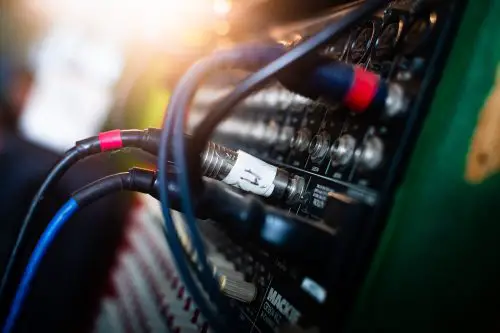
Lower the volume before turning on the amp
When first turning the amplifier on, it is best to keep the volume low and then gradually make it louder as you go. Too much volume at the start of your playing will put damaging your amplifier at risk.
Imagine if you had stretched your legs every day, and then you eventually got to where you could do a full split. If you were to take six months off from pulling and then tried to do a full split six months later, you would almost certainly tear a muscle.
Your amplifier is the same way. It needs to start slowly at a lower volume, and then it can be built up from there.
5. Cover when it is not in use
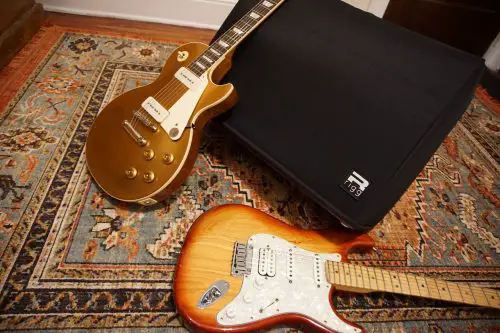
Cover your amp when it is not in use.
Your amplifier, like anything else, is subject to getting layers of dust on it and in it when it is not used. Dust on electrical components inside the amplifier can affect the tone of your playing adversely.
Additionally, dust inside the jacks can make it so that when you plug in the amplifier, it does not connect as well. Taking the time to dust it out regularly will help your amplifier last much longer.
6. Replace the tubes in your tube amplifier
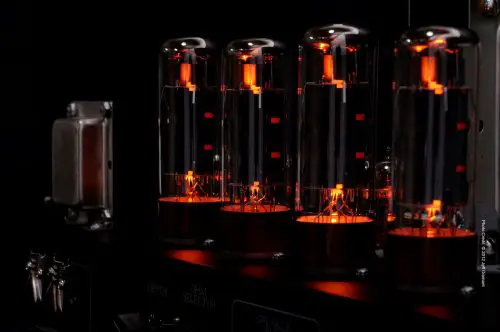
Replace the tubes of your amp timely
Replacing damaged tubes in your tube amplifier is crucial, as it helps prevent damage to the electrical transformer inside your amplifier. Replacing the tubes in your amplifier will also help it sound as clear as possible.
7. Keep the firmware updated
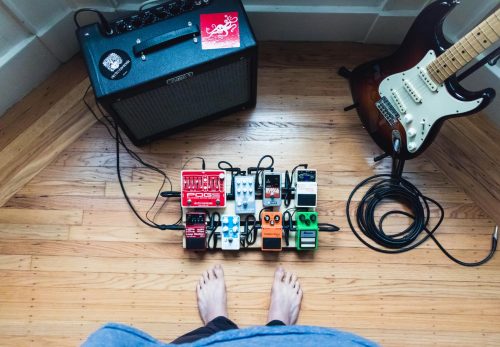
Update the firmware timely
Downloading the newest version of your amplifier’s internal software will ensure that it functions internally as best as possible. This is assuming this is even an option if you have a newer amplifier.
The process to do so will vary depending on the brand of your amplifier. Check with the manufacturer for the directions to do so.
How Do You Clean the Dust Out of My Guitar Amp?
It would be best if you carefully cleaned anything that deals with electrical components. Dusting electrical equipment is not difficult; it requires a few extra steps. Please carefully follow these steps to clean the dust out of your guitar amplifier to clean it as safely and thoroughly as possible:
1. Unplug it
The first obvious step is to unplug it. After doing so, you should wait approximately twenty-four hours before doing anything to the amplifier.
2. Take it outdoors
Move it outdoors if it has been a while since it has been cleaned. This is because amplifiers that have not been cleaned in some time have the potential to kick up a great deal of dust and debris.
It is also a good idea to move it outdoors so you have less of a potential mess to clean up indoors once you finish cleaning the amplifier.
3. Remove the cover
Remove the cover of the amplifier with a screwdriver. Place the screws into a bag so as not to lose them. That is way too frustrating of a problem to deal with.
4. Get your vacuum cleaner and the hose attachment out
Use the vacuum cleaner hose to remove dust inside the amplifier. Be careful not to put it on too high of a setting and to be mindful of how close you are holding the hose to the internal components of the amplifier, as there is a possibility of pulling some of the internal wiring and circuits loose.
5. Cover the sockets
Cover any input sockets with masking tape. Also, after removing the knobs to clean those, place some tape covering the pots (openings on the amplifier beneath the knobs after removing them). The less debris that can get into these openings, the better.
6. Blow the dust off of any fans
This can be done with a compressed air can. You may need to insert a screwdriver into the fan to prevent it from moving from the compressed air being blown onto it.
Take care of the dust on the fans before the internal circuit board, blowing the air through the fans in both directions (from outside and inside out).
7. Blow compressed air through the vents.
Move from the front of the amplifier to the back. If your amplifier is incredibly dusty, consider using two closed-air cans. You can switch them out alternately as you go.
8. Get out the paintbrush
If there is any other debris still stuck to the amplifier, it can be removed with a paintbrush. Just lightly brush it back and forth to lightly off the internal components to remove anything else that may still be there. Please do so as gently as possible.
9. Get the electrical cleaner spray
Next, take an electrical cleaner to spray any parts of the internal circuitry off as needed. Then wipe off the internal components with a cloth you have placed 99% Isopropyl alcohol onto.
10. Let it dry out
Give it several hours for every part of the amplifier to completely dry out. You are now done cleaning it.
11. Reassemble the amplifier
Don’t forget where you put your bag with the screws.
FAQs
Q: How Do You Store a Guitar Amp?
If it is being stored for an extended period, use a cover to prevent dust and debris from settling into the amplifier.
If it is being held in cold temperatures and the amplifier runs on tubes, it should return to room temperature before turning it on and playing it again to avoid damaging the tubes.
Additionally, storing the amplifier on its side is not a good idea. This is because a lot of the parts will slide back down.
Storing it with the speaker down is also a bad idea. This is because there is the potential of the speaker cone getting damaged.
Q: Can You Mount an Amp Upside Down?
It can be stored upside down since when it is turned right side up, everything internally will fall back to its natural position.
Regardless of the way it is being held, it should be covered with nothing pressing up against the speaker cone to avoid any potential damage.
Conclusion
We covered the importance of protecting your guitar amplifier in more detail. We also reviewed the potential damage a build-up of dust can do to your guitar amplifier and recommended an excellent amplifier cover. We also went over general tips for taking care of the amplifier.
We also went into detailed answers to some frequently asked questions like how to clean dust out of a guitar amplifier properly, how to best store a guitar amplifier, and if an amplifier can be stored upside down or not.
Taking the extra step of covering your amplifier and following the tips in this article are well worth doing so, as they will ensure you get the most life out of your amplifier possible.
Not only will it sound better and more extended, but you will also get to play longer and sound better.


